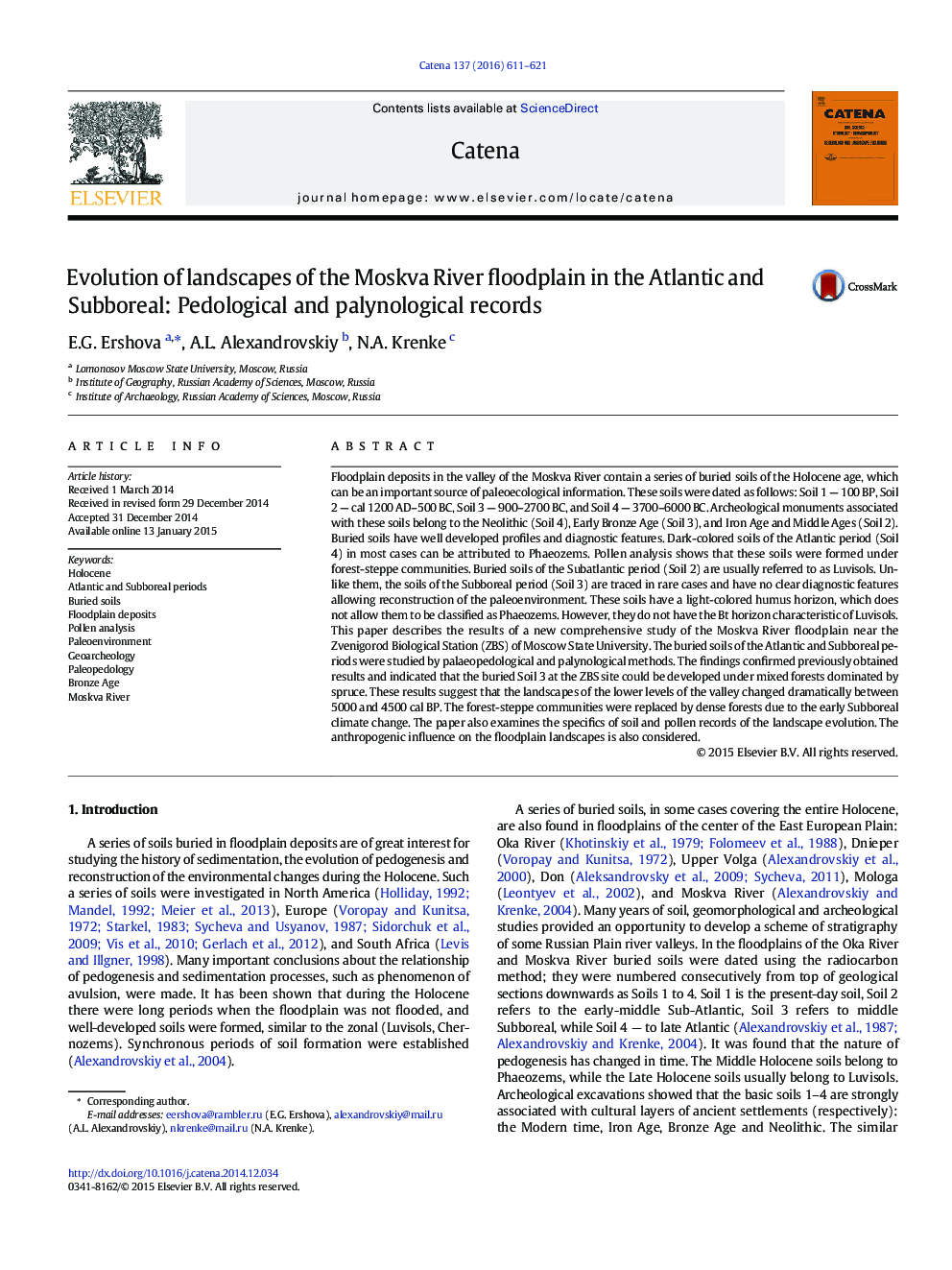| کد مقاله | کد نشریه | سال انتشار | مقاله انگلیسی | نسخه تمام متن |
|---|---|---|---|---|
| 6408034 | 1629215 | 2016 | 11 صفحه PDF | دانلود رایگان |

- A series of buried soils are found in the floodplain of the Moskva-river.
- The Atlantic soils (Soil 4) belong to Phaeozems and were formed under forest-steppe.
- The Subatlantic soils (Soil 2) belong to Luvisols and were formed under forests.
- The poor developed Subboreal soils (Soil 3) are rarely found and have uncertain characteristics.
- Pollen data of Soil 3 revealed mass distribution of spruce in the early Subboreal.
Floodplain deposits in the valley of the Moskva River contain a series of buried soils of the Holocene age, which can be an important source of paleoecological information. These soils were dated as follows: Soil 1 - 100 BP, Soil 2 - cal 1200 AD-500 BC, Soil 3 - 900-2700 BC, and Soil 4 - 3700-6000 BC. Archeological monuments associated with these soils belong to the Neolithic (Soil 4), Early Bronze Age (Soil 3), and Iron Age and Middle Ages (Soil 2). Buried soils have well developed profiles and diagnostic features. Dark-colored soils of the Atlantic period (Soil 4) in most cases can be attributed to Phaeozems. Pollen analysis shows that these soils were formed under forest-steppe communities. Buried soils of the Subatlantic period (Soil 2) are usually referred to as Luvisols. Unlike them, the soils of the Subboreal period (Soil 3) are traced in rare cases and have no clear diagnostic features allowing reconstruction of the paleoenvironment. These soils have a light-colored humus horizon, which does not allow them to be classified as Phaeozems. However, they do not have the Bt horizon characteristic of Luvisols. This paper describes the results of a new comprehensive study of the Moskva River floodplain near the Zvenigorod Biological Station (ZBS) of Moscow State University. The buried soils of the Atlantic and Subboreal periods were studied by palaeopedological and palynological methods. The findings confirmed previously obtained results and indicated that the buried Soil 3 at the ZBS site could be developed under mixed forests dominated by spruce. These results suggest that the landscapes of the lower levels of the valley changed dramatically between 5000 and 4500 cal BP. The forest-steppe communities were replaced by dense forests due to the early Subboreal climate change. The paper also examines the specifics of soil and pollen records of the landscape evolution. The anthropogenic influence on the floodplain landscapes is also considered.
Journal: CATENA - Volume 137, February 2016, Pages 611-621